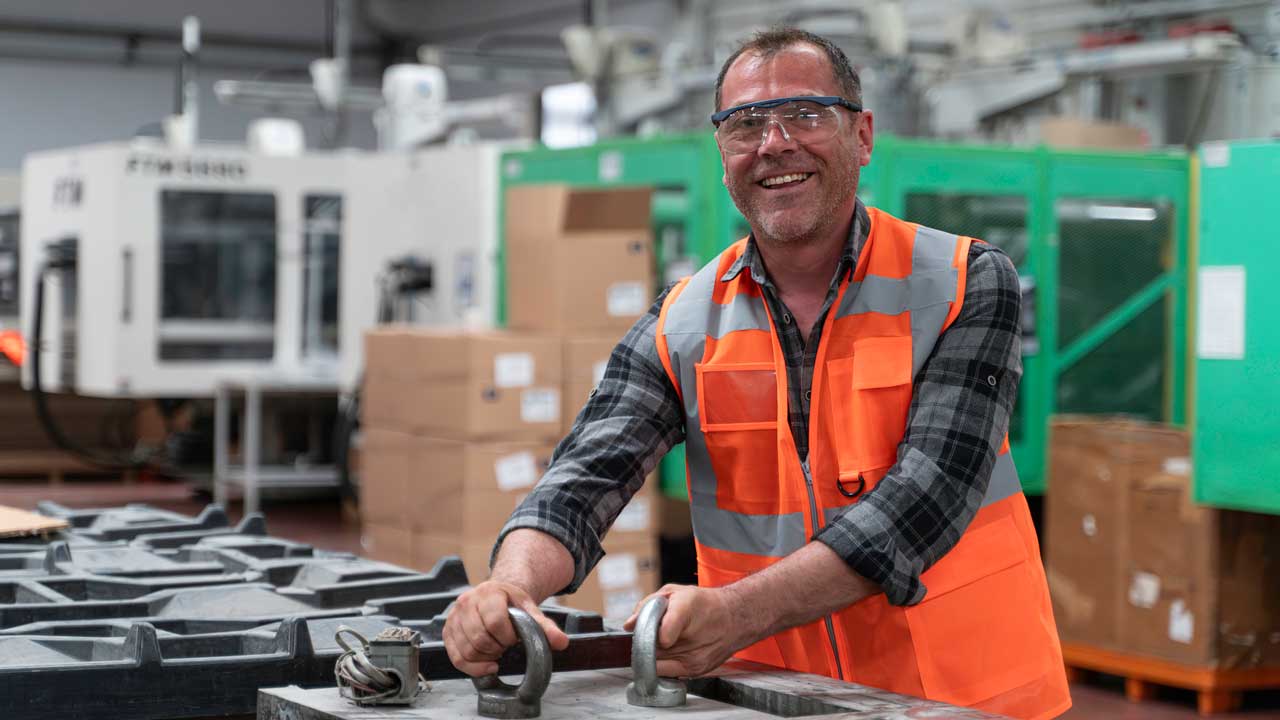Classifying Ergonomic Solutions
Ergonomic solutions in the workplace can significantly decrease the risk of work-related musculoskeletal disorders (MSDs) by addressing various risk factors.
- Uncomfortable or rigid postures: Performing tasks that put strain on the body, such as bending, twisting, or reaching overhead.
- Repetitive movements: Repeatedly performing the same actions too frequently, too quickly, or for extended periods of time.
- Excessive force: Using too much effort during tasks, which can cause fatigue and increase the risk of injury.
- Managing heavy or bulky loads: Activities such as lifting, pushing, pulling, or carrying large items, particularly when paired with bending or twisting motions.
- Vibration: Prolonged exposure to whole-body vibrations, such as those experienced by truck drivers, or localized vibrations from power tools.
- Environmental factors: Working in cold environments can numb the hands and limit flexibility, while hot and humid conditions may lead to fatigue and reduced efficiency.
- Extended periods of immobility: Remaining seated or standing in a fixed position for too long.
- Workplace dynamics: A fast-paced environment, limited job autonomy, and high cognitive demands.
- Psychosocial stress: Challenges like low job satisfaction, financial pressures, and struggles with work-life balance can significantly increase the risk of developing musculoskeletal disorders.
By addressing these risk factors, employers can help reduce the likelihood of MSD injuries in the workplace.
Implementing Ergonomic Solutions
Many industries have successfully implemented ergonomic solutions to address MSD injury risks in the modern industrial workplace. These interventions include retrofitting or altering existing equipment, changing work practices, and purchasing new tools or other devices to implement in the production process.
These modifications reduce physical demands, eliminate extraneous movements, lower injury rates, decrease the associated workers’ compensation costs, and reduce employee turnover. In virtually all instances, work efficiency and productivity increase as well. Simple, low-cost solutions are often available to solve problems.
Classifying Ergonomic Solutions
These solutions come in many forms but can be broken down into the following three categories:
Personal Protective Equipment
Personal protective equipment is also a form of protection against ergonomic hazards. While personal protective equipment does not eliminate ergonomic hazards, it does help to mitigate the potential damage these hazards can inflict on employees. Personal protective equipment is anything that individual employees utilize to protect themselves from potentially injurious stimuli. Examples of personal protective equipment would include:
- Use padding to reduce direct contact with hard, sharp, or vibrating surfaces
- Wear properly fitting gloves to help with cold conditions, hot objects, or to protect against damaging debris while maintaining the ability to grasp items easily.
- Wearing respiratory protection in areas with limited ventilation or noxious fumes.
- Wearing hearing protection in environments subject to loud sounds.
Engineering Solutions
Engineering controls are the most easily recognizable and most effective solutions to eliminating ergonomic risk factors. Engineering controls are any implementations that result in a physical change of the workplace by adding machinery or devices that eliminate strain from an employee’s workload or reduce the overall hazardousness of the operation. Examples of engineering controls would include:
- Use a device to lift and reposition heavy objects to limit force exertion.
- Reduce the weight of a load to limit force exertion.
- Reposition a worktable to eliminate a long/excessive reach and enable working in neutral postures.
- Use diverging conveyors off a main line so that tasks are less repetitive.
- Install diverters on conveyors to direct materials toward the worker to eliminate excessive leaning or reaching.
- Use work positioning tools to enable neutral postures.
Administrative or Work Practice Solutions
Administrative or work practice controls are oftentimes the least thought of solutions to ergonomic problems, however, these types of solutions can be very effective for highly repetitive tasks in a manufacturing environment. Administrative solutions are anything that an organization does to restructure the process or procedure in a manufacturing environment. Examples of Administrative solutions would include:
- Require heavy loads to be lifted by two people to limit force exertion.
- Establish systems where workers are rotated away from tasks to minimize the duration of continual exertion, repetitive motions, and awkward postures.
- Design a job rotation system in which employees rotate between jobs that use different muscle groups.
- Staff “floating workers” to provide periodic breaks for other employees between scheduled breaks.
- Properly use and maintain pneumatic and power tools.
Engineering controls are the most desirable, where possible, as they have the greatest potential to eliminate injurious incidents. Administrative or work practice controls may be appropriate in some cases where engineering controls cannot be implemented or when different procedures are needed after the implementation of the new engineering controls. Personal protection solutions have only limited effectiveness when dealing with ergonomic hazards and should be implemented in addition to other ergonomic solutions.
Understandably so, risk factors cannot be eliminated in their entirety from our world. However, in a workplace, we can eliminate and mitigate as many risk factors as possible. Work tasks should be designed to limit exposure to ergonomic risk factors. Whether these solutions are engineering, administrative, or the implementation of personal protective equipment is not the focal point. The focal point should be ensuring the safety, comfort, and productivity of employees during manufacturing processes.



